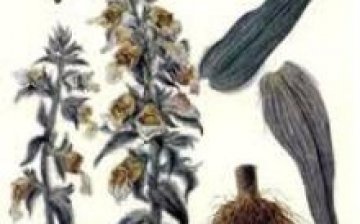Foxglove woolly
Woolly digitalis is a perennial or biennial herb from the Norichnikov family. Foxglove has a small woody rhizome, simple and erect stems. Rarely, the stems are ascending, the height of the foxglove is up to 1.5 meters. The lower and basal leaves are ovoid, oblong, pointed or obtuse. They may have a solid edge or several small teeth at the top. The upper leaves are pointed, sessile, at the apex they decrease and pass into the bracts.
Woolly digitalis has large flowers with short, glandular-pubescent pedicels, yellow in color. The flowers are collected in a multi-flowered and dense pyramidal raceme. Foxglove blooms from June to August, and fruit ripens from July to September.
The fruit of the foxglove is a two-celled capsule, which has a conical shape and is covered with glandular hairs. Woolly foxglove has numerous brownish seeds. The plant is propagated by seeds.
Woolly foxglove is considered a medicinal plant. It contains cardiac glycosides, steroid glycosides, organic acids. Foxglove in the form of leaves is used for the production of digoxin, lantoside, celanide. Woolly foxglove preparations are rapidly absorbed and have a diuretic effect. Collecting foxglove should be done before flowering in dry weather. The plant is dried in special dryers without air access.
Woolly foxglove is a poisonous plant, care must be taken when collecting and using this plant.



